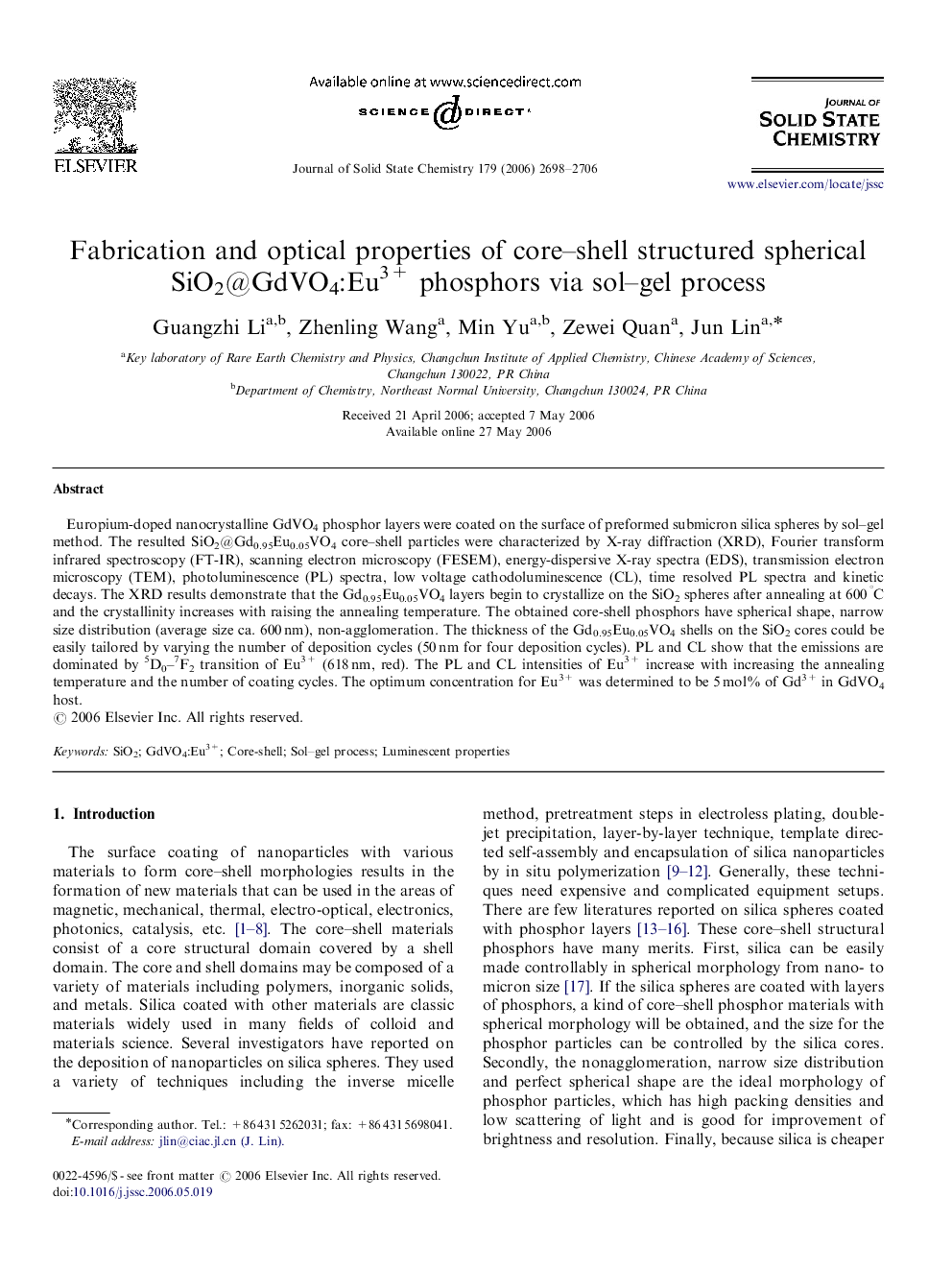| Article ID | Journal | Published Year | Pages | File Type |
|---|---|---|---|---|
| 1333550 | Journal of Solid State Chemistry | 2006 | 9 Pages |
Europium-doped nanocrystalline GdVO4 phosphor layers were coated on the surface of preformed submicron silica spheres by sol–gel method. The resulted SiO2@Gd0.95Eu0.05VO4 core–shell particles were characterized by X-ray diffraction (XRD), Fourier transform infrared spectroscopy (FT-IR), scanning electron microscopy (FESEM), energy-dispersive X-ray spectra (EDS), transmission electron microscopy (TEM), photoluminescence (PL) spectra, low voltage cathodoluminescence (CL), time resolved PL spectra and kinetic decays. The XRD results demonstrate that the Gd0.95Eu0.05VO4 layers begin to crystallize on the SiO2 spheres after annealing at 600 °C and the crystallinity increases with raising the annealing temperature. The obtained core-shell phosphors have spherical shape, narrow size distribution (average size ca. 600 nm), non-agglomeration. The thickness of the Gd0.95Eu0.05VO4 shells on the SiO2 cores could be easily tailored by varying the number of deposition cycles (50 nm for four deposition cycles). PL and CL show that the emissions are dominated by 5D0–7F2 transition of Eu3+ (618 nm, red). The PL and CL intensities of Eu3+ increase with increasing the annealing temperature and the number of coating cycles. The optimum concentration for Eu3+ was determined to be 5 mol% of Gd3+ in GdVO4 host.
Graphical abstractSpherical SiO2 particles have been coated with GdVO4:Eu phosphor layers by a Pechini sol–gel process, which show the characteristic red emission of Eu3+.Figure optionsDownload full-size imageDownload as PowerPoint slide
